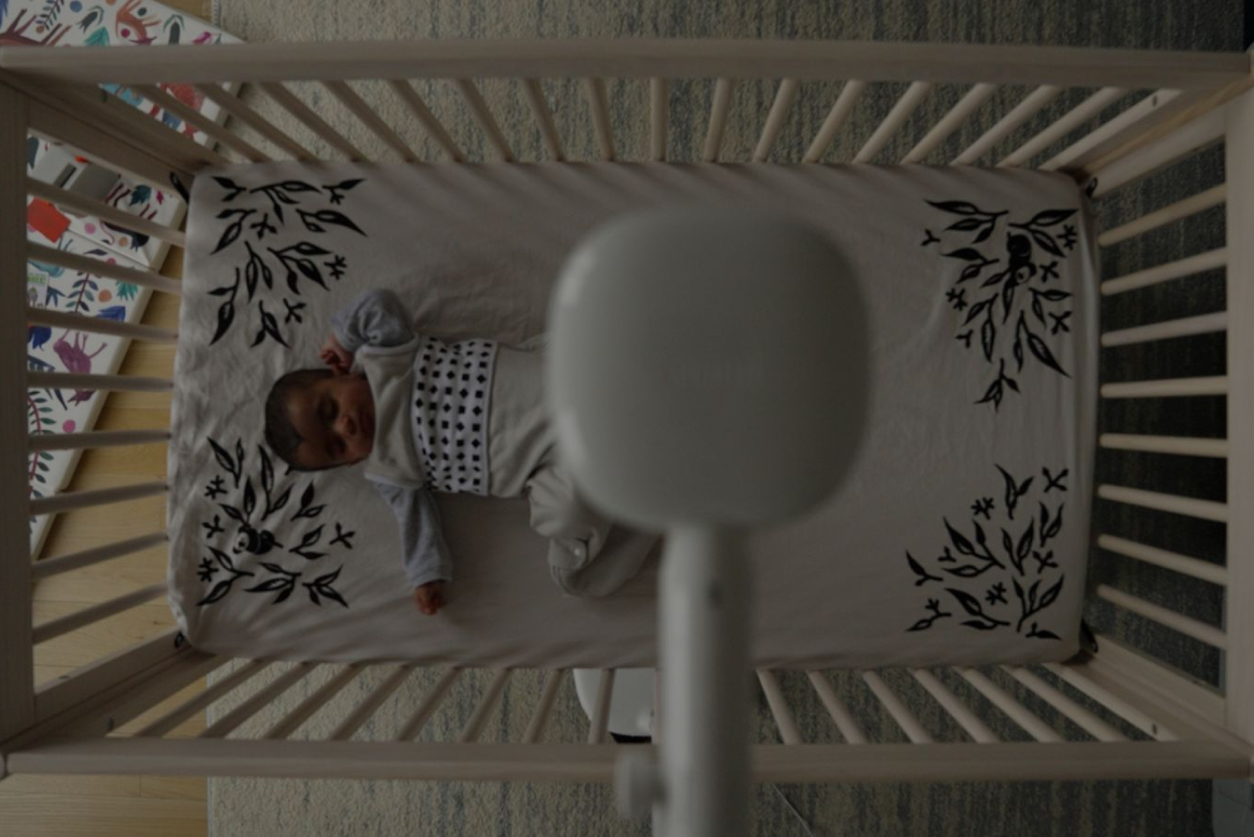If, as a new parent, you’re starting to wonder if you’ll ever find your way back to blissful full nights of sleep again, there are a couple of things to know: 1. Yes, you definitely will. And 2. Sleep training can help.
Sleep training teaches your child to soothe themselves and fall asleep under their own power. But with so many sleep training techniques to choose from, which one is right for you and your baby? Here, we share three of the most common training methods: extinction (cry it out), graduated extinction (Ferber), and parental presence (camping out).
Sleep training 101
Sleep training can be challenging—it takes patience, dedication, and consistency to follow through on a technique. To help you hone in on a method, we’re answering some of the most common sleep training questions.
What is sleep training?
Sleep training is the process of teaching your baby the skill of sleep independence, in other words the ability to fall asleep (and stay asleep) all on their own.
You may be envisioning sleep training as a tear-filled experience for everyone involved. Hear a phrase like “cry it out” and it’s easy to see why. But it’s important to know that sleep training is not a one-approach-fits-all process. There are various ways to train your baby to sleep on their own—and you get to choose which method feels best to you.
In essence, sleep training involves teaching your baby to self-soothe, helping themselves doze off rather than needing someone elseto rock or soothe them. The big benefit: Less intervention from you or another adult. If your baby wakes up during the night, they’re much more likely to simply put themselves back to sleep.
When should I start sleep training?
Experts recommend the sweet spot for sleep training to be around 4 to 6 months old, when a baby’s circadian rhythm is developed. At this age, babies better understand that nighttime is for sleep and daytime is for being awake.
The trouble with attempting sleep training before 4 months old is that it might not establish long-term sleep habits. Before 4 to 6 months, babies are still adjusting to the world around them, often feeding frequently at night and without a set sleep schedule. After 4 months, your child is more likely to hold onto the habits they learn.
One thing to keep in mind: Sleeping through the night doesn’t necessarily mean an uninterrupted eight-hour stretch right away. For example, a sleep-trained 6-month old might give you a five- to six-hour stretch before waking and crying for milk. Not all night, but still significantly more than the two or three hours of sleep you were getting before.
How long will it take before they’re sleeping entirely on their own?
Babies are unique, so it’s hard to predict exactly how long it may take for sleep training to click. Your baby might master your chosen method in just a few days, while it could take a few weeks for your friend’s little one.
Generally, many babies start sleeping for longer stretches within four nights to a week. But if your child takes a bit longer to adjust, don’t give up! Success has a lot to do with how consistent you are with your chosen method, so hang in there—you've got this!
3 sleep training techniques to consider
With so many sleep training methods to choose from, it can be intimidating to find the right one. To help, here are three common techniques. Follow your instincts and try whatever approach feels best to you.
Cry It Out (CIO) method
The CIO method is exactly what it sounds like. Lay your little one down in their sleep space while they’re tired but still awake, then leave the room for the night. When they begin crying—as much as you might want to go in and soothe them—you remain outside of their room to give them the chance to independently put themselves back to sleep. This can take anywhere from a few minutes to an hour or longer.
Here are the basic steps of the CIO method:
- Step 1. Follow your established nighttime routine (feeding, burping, and changing your little one’s diaper, etc.)
- Step 2. Place them in bed on their back, while they’re sleepy but still awake.
- Step 3. Tell them goodnight and quietly leave the room. Even if they cry, stay outside the room until it’s time for their next feeding.
This method is hard for many parents, however, supporters of the technique say it works relatively quickly.
The Ferber method
If you’re interested in a less strict version of CIO, the Ferber sleep training method might be for you. Also known as graduated extinction, the Ferber method allows your little one to cry for a prescribed amount of time before you go back into the room to reassure them. This approach incorporates some parental comfort while still allowing the baby to practice self-soothing.
Like CIO, Ferber begins by performing your little one’s usual bedtime routine, followed by placing them in their bassinet or crib when they’re drowsy, but not yet asleep. When your little one cries:
- Step 1. The first time they cry, start a timer for three minutes. After three minutes, you can go back into your child’s room and soothe them without taking them out of bed.
- Step 2. Each subsequent time they cry, increase the time [by two minutes?] before reentering the room and soothing them: So for example, first wait for 3 minutes, then 5, then 7, and so on.
Although the Ferber method recommends the above specific intervals, you can adjust the times between check-ins to suit your and your baby's needs.
Camping out method
If your child is 1—or even a full-blown toddler—and hasn’t been sleep trained, you might think it’s too late. But either of the above methods is fine to try any time after 4 months. The camping out method is designed specifically for older babies and toddlers.
This method lets you ‘camp out’ in a chair in your little one’s bedroom as they settle down and fall asleep. It’s excellent for older sleepers because you can still provide the comfort of your presence while increasing the literal distance between you and your child each night. Before you know it, you’ll be out the door, and they’ll be falling asleep on their own.
Here’s how to implement the camping out method:
- Step 1. Place your child in their bed and sit in a chair next to their bed.
- Step 2. Remain in that spot until they fall asleep. Try to limit interactions with your little one; you don’t want them to confuse this moment as the perfect time to play.
- Step 3. The next night, move your chair a few feet from your child’s bed and repeat the process. Every night or two, gradually increase the distance between you and your child, providing verbal reassurance as necessary. The entire process usually takes anywhere from one to three weeks.
Tips to make sleep training techniques go more smoothly
Make the sleep training process as seamless as possible with these tips:
- Choose the right time. There’s no ‘perfect’ time to begin sleep training, but it helps to start when your child is not teething, undergoing a sleep regression, or in the middle of a cold. Also, try to pick a week when you don’t have any big commitments, like work dinners or hosting friends, so you can focus on the process.
- Create a consistent bedtime routine. Most babies and children thrive on routine, so establish one that works for your family. Common bedtime activities include bathing, putting on PJs, reading a story, and providing one last feeding.
- Create a comfortable sleep environment. Set the thermostat to a cool temperature and use a sound machine to drown out any outside noises and limit sleep disturbances.
- Be consistent with bedtime. While your child’s bedtime might change slightly as naptimes transition, try to maintain a regular sleep schedule each night.
- Use a reliable baby monitor. No matter which sleep training method you use, it's natural to want to monitor your baby's progress as they learn to self-soothe. With the Nanit Pro Camera, you can watch their every movement in perfect clarity from the comfort of your phone. Plus, the Breathing Band works hand in hand with the camera to monitor their breathing motion throughout the night, so you can feel confident that they’re safe and sound.
Master sleep training with Nanit
Sleep training might feel daunting, but for many families, it’s well worth the commitment. With persistence, you and your child could be sleeping through the night, and your little one will have learned a lifelong skill. A baby monitor you can trust is a valuable assistant in the process.
Enter Nanit, the smart way to monitor and track your baby’s sleep patterns. Not only can you watch your little one in real-time as they soothe themselves to sleep, but the Nanit Pro Camera also tracks their developmental milestones, growth, and sleep metrics.
Take the first step toward a better night’s sleep and try Nanit today.
Key takeaways
- Importance of sleep training. Sleep training teaches babies to self-soothe and fall asleep on their own, ultimately leading to more restful sleep for you and your child.
- Variety of methods. There are multiple sleep training methods, including the cry it out (CIO) method, the Ferber method, and the camping out method, each with different approaches and levels of parental involvement.
- Tips for success. Successful sleep training involves choosing the right time, creating a consistent bedtime routine, ensuring a comfortable sleep environment, and using tools like a reliable baby monitor to add to your peace of mind.
Sources:
Sleep Foundation. Sleep Training. https://www.sleepfoundation.org/baby-sleep/sleep-training#references-131808
Cleveland Clinic. When and How to Sleep Train Your Baby. https://health.clevelandclinic.org/when-and-how-to-sleep-train-your-baby
Cleveland Clinic. Is It OK To Let Your Baby Cry It Out to Sleep? https://health.clevelandclinic.org/cry-it-out-method
Sleep Foundation. The Ferber Method for Sleep Training. https://www.sleepfoundation.org/baby-sleep/ferber-method
Raising Children. Camping Out: Baby and Child Sleep Strategy. https://raisingchildren.net.au/babies/sleep/solving-sleep-problems/camping-out







































